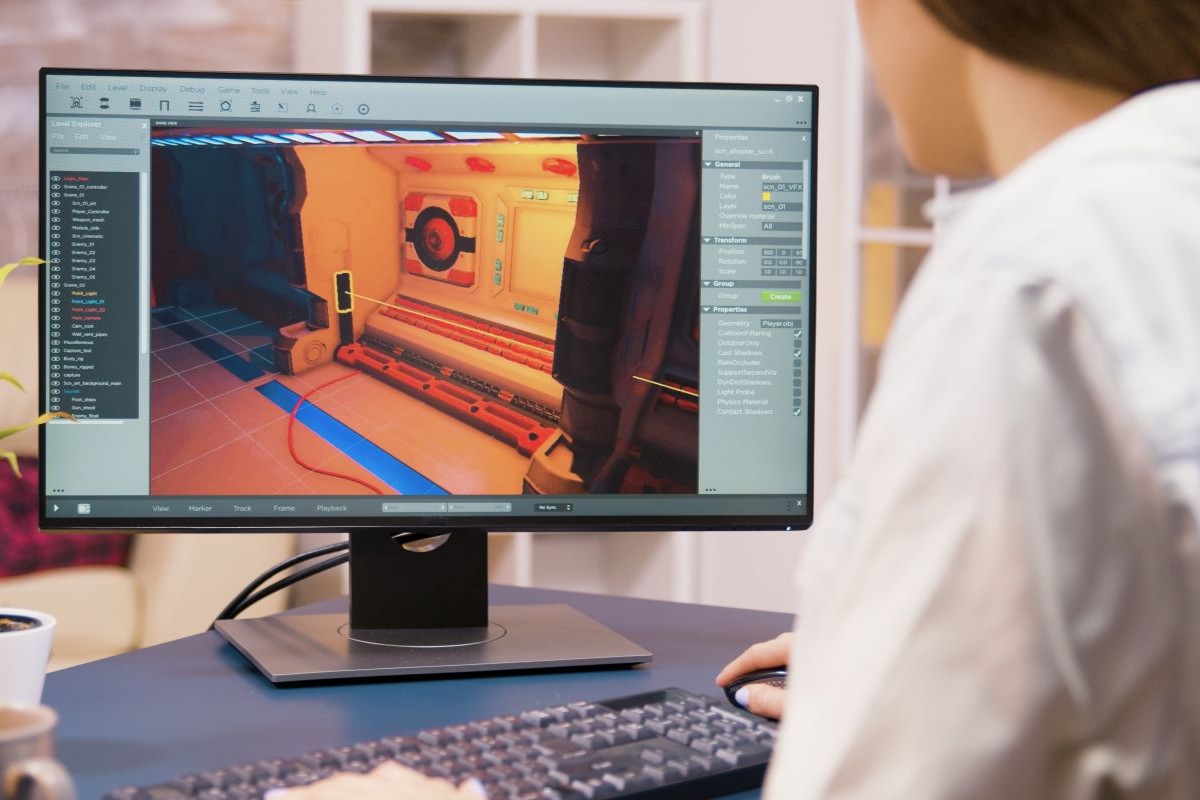
7 Industries That Need 360 Degree Production
There was a time when 360 degree production was seen as little more than a novelty, something reserved for real estate walkthroughs or tourism experiences. Today, that perception is shifting, and not just because the technology has matured. What is changing is how organisations are choosing to communicate complex spaces, processes, and environments. They are no longer just looking to present information, they want viewers to step inside it. 360 degree production has become a scalable way for industries to create orientation, spatial awareness, and emotional context, without relying on presence or proximity. When used with intention, it can transform static interactions into situational ones, turning a screen into something closer to a site visit, a briefing room, or a live demonstration. What is especially compelling is where this shift is happening. It is not only creative teams or marketers driving adoption. It is sectors like construction, healthcare, public safety, education, spaces that are under pressure to communicate better, faster, and more intuitively, often at scale. Let’s take a look at seven industries that are moving beyond traditional video, and why 360 degree production is becoming part of their operational vocabulary.
1. Healthcare and Medical Training
Where immersive orientation meets surgical simulation
Healthcare has long relied on in-person simulations and verbal briefings to prepare staff and inform patients. But with increasing demand for remote collaboration, simulation-based training, and patient-focused communication, 360 degree production has found serious traction.
Hospitals are now using interactive 360° video for virtual tours to reduce patient anxiety and streamline pre-visit information. Beyond public-facing experiences, medical schools and teaching hospitals are turning to immersive simulations for surgical practice, allowing students and junior clinicians to explore surgical environments in context-rich, visual formats. This is not a replacement for traditional training, but rather a scalable supplement that helps standardise learning and reduce variability in preparation.
Empathy-based scenarios are also growing in use, particularly for mental health practitioners and medical support roles. These 360° productions allow staff to experience perspectives from individuals with cognitive impairments or emotional distress, leading to greater sensitivity and more informed interaction.
360 degree production in this context is helping institutions scale education, reduce pre-op confusion, and humanise clinical interactions, all without disrupting workflow.
2. Construction and Facility Management
Safety inductions that scale beyond the site boundary
Construction projects, by nature, involve ever-changing environments, rotating personnel, and rigid compliance protocols. Traditionally, this has meant repeated on-site safety briefings, printed documentation, and often, inconsistencies in delivery.
360 degree production provides a practical and scalable alternative: fully immersive site inductions and orientation walk-throughs. These videos allow contractors, subcontractors, and engineers to familiarise themselves with a site before they step foot on it. Hotspots embedded in the video can guide viewers through hazard zones, PPE requirements, restricted areas, and emergency exits.
Unlike static documents, these immersive experiences reduce variability in training, standardise safety messaging, and provide a consistent onboarding experience, especially useful across large-scale or multi-phase projects.
The value is operational rather than promotional. Teams are onboarded faster, risks are mitigated, and safety compliance becomes traceable. When approached with precision, 360 degree production for construction moves beyond tech novelty and becomes part of the process infrastructure.
3. Automotive Design, Safety and Testing
Immersive reviews that compress design cycles
Designing and testing a vehicle used to require extensive prototyping and in-person evaluations. But as design teams stretch across regions and consumer expectations rise, 360° video has become a new visual standard for collaboration and review.
Instead of flying stakeholders in for review sessions, manufacturers are creating immersive digital twins of interiors and test simulations. These 360° environments allow teams to remotely walk through vehicle cabins, assess ergonomics, and test visibility across variants. Simulations can be used to analyse driver line-of-sight, passenger flow, or even motion responses from a seated viewpoint.
From a consumer angle, virtual test drives are becoming a practical sales tool, particularly in markets where buyers conduct most of their research online. These experiences offer context and realism that flat video cannot replicate. 360 degree production in the automotive space supports both R&D and consumer engagement, offering a way to streamline reviews while maintaining accuracy.
4. Nonprofits and Immersive Storytelling
Turning abstract impact into first-person context
Many nonprofit initiatives operate in regions that donors will never visit. Traditionally, conveying impact has relied on photography, written reports, or occasionally video interviews. But these formats often lack spatial context and emotional gravity.
360 degree production enables donors, board members, and institutional partners to virtually step into the environments their support is affecting. A walk through a newly constructed school, a health clinic mid-operation, or a rural water system in use becomes more than just visual, it becomes spatial and situational.
These productions are now being integrated into digital fundraising campaigns, annual reports, and donor onboarding processes. The immersive format allows stakeholders to experience not just what was built, but how it functions in context, who uses it, and why it matters.
The result is a deeper understanding of scale, process, and operational nuance. For nonprofits operating across regions or in volatile contexts, this adds trust and transparency to donor relationships.
5. Education and Immersive Learning
Simulated environments that go beyond the classroom
Education, both academic and vocational, is increasingly hybrid, asynchronous, and experience-driven. Students learn in more dynamic environments, but they often lack the chance to interact with spaces that reflect the working world. This is where 360 degree production fills a gap.
Universities are building immersive 360° modules for virtual lab experiences, field training, and historical site walkthroughs. These videos can be augmented with clickable elements for quizzes, explanations, or learning objectives, creating a dual sensory and cognitive engagement.
Vocational training institutions are using similar formats for equipment training, emergency response simulations, or service walkthroughs, contexts where practical orientation is essential, but logistics make real-world interaction costly or impossible.
When integrated into Learning Management Systems or interactive eLearning platforms, 360 degree production supports both pedagogy and accessibility. It brings learners closer to the environments they are preparing for without sacrificing safety or operational time.
6. Tourism, Culture and Performing Arts
Making space for virtual presence in physical experiences
Tourism was an early adopter of 360° video, but what is changing now is the purpose. It is no longer just about scenic previews. Cultural organisations, performance venues, and heritage groups are adopting 360 degree production to archive, replicate, and extend the life of performances and exhibitions.
Orchestras are recording full performances in spherical video to offer immersive ticketed experiences. Museums are using 360° tours as part of their educational outreach, allowing students or overseas visitors to walk through curated exhibits. Independent artists and cultural institutions are creating spatially immersive archives to document work that may not have ongoing physical access.
In many cases, these productions are not just digital extensions, they become primary access points for international audiences, schools, or mobility-limited individuals.
This type of 360 degree production positions culture not as something that happens in a room, but something that can be experienced globally, without loss of spatial understanding or interaction.
7. Retail and Immersive Product Experiences
Environments that anticipate questions before they are asked
Retail environments have transformed. With the growth of online-only brands and digitally native consumers, the traditional showroom is being replaced with virtual environments that can do more than just showcase products, they guide decision-making.
360 degree production is now used to simulate real-world use of products in spaces such as kitchens, workspaces, or commercial environments. Interactive hotspots within the video allow viewers to examine product variations, access specifications, and compare alternatives. This format is particularly useful for high-consideration purchases where context and spatial awareness drive decisions.
Retailers are also exploring how immersive experiences support accessibility, allowing users to evaluate height, reach, and visibility in real terms rather than static renders.
In this context, 360 degree production is not about replicating physical stores. It is about designing digital environments that help customers make confident decisions without needing to translate technical specs into visual understanding.
Rethinking Application Through Immersion
What is particularly interesting about these use cases is not the technology itself, but the way it is being applied to rethink familiar processes. 360 degree production is no longer limited to showcasing, it is being used to standardise training, explain complex systems, support remote collaboration, and enhance institutional transparency.
Industries that have traditionally been slow to adopt media innovation are now identifying very practical uses for immersive formats, often not to impress, but to inform and scale.
The question for organisations is less about whether 360 degree production fits into their marketing plan, and more about where it fits into their operations. Whether in healthcare, construction, education or performance, the format is becoming less of an option and more of a medium that solves otherwise unsolvable communication challenges.
Let this be a prompt to ask, where does your organisation rely on presence, context or orientation to deliver its work? That may be exactly where 360 degree production belongs.
If your team is exploring how to communicate space, process, or scale more intuitively, 360 degree production is no longer an experimental extra, it is becoming standard. Sound Idea Digital works with organisations to align these formats with real operational goals. Let’s discuss where it could make sense for you.
We are a full-service Web Development and Content Production Agency in Gauteng specialising in Video Production, Animation, eLearning Content Development, Learning Management Systems, and Content Production.
Contact us for a quote. | enquiries@soundidea.co.za | https://www.soundideavideoproduction.co.za| +27 82 491 5824 |
Extending the Conversation Around Immersive Formats
If 360 degree production is prompting new questions about how immersive formats fit into broader communication strategies, you are not alone. From integrating AI and AR into production workflows, to building realistic crisis simulations and spatial training tools, organisations are increasingly treating immersive media as part of a scalable communication framework, not just a visual add-on. These articles offer a deeper look into adjacent technologies and use cases shaping that shift.
6 Reasons to Ask Your Video Production Firm About AI, AR & VR

